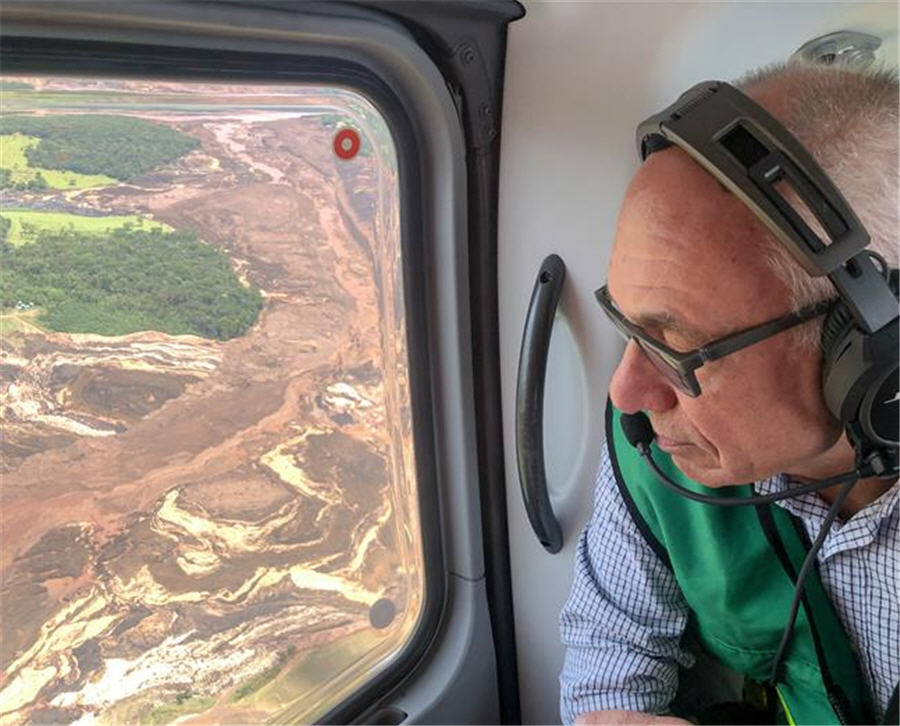Vale declares force majeure on some contracts after deadly dam burst

Brazilian miner Vale SA on Tuesday declared force majeure on some iron ore contracts after a court-ordered halt to a mine responsible for nearly 9 percent of its output following a dam burst which likely killed more than 300 people.
The force majeure on some iron ore and pellets sales contracts came after a court on Monday ordered it to stop using eight tailings dams, including one affecting production of about 30 million tonnes of iron ore output per year.
The force majeure is the latest sign of how the Jan. 25 disaster at the tailings dam at Vale’s Corrego do Feijao iron ore mine in Brazil’s mining heartland of Minas Gerais, which killed 142 people, with 194 still missing, is roiling the broader mining industry.
Iron ore prices have surged since the disaster, hitting a nearly two-year high on Monday.
Evidence suggested the burst was caused by liquefaction.
The force majeure announcement came as questions swirl around whether more could have been done to prevent the Brumadinho disaster, Brazil’s deadliest ever.
A report Vale commissioned last year to look into the stability of the tailings dam certified it as sound but raised concerns over its drainage and monitoring systems.
The report by German-based TÜV SÜD, reviewed by Reuters on Tuesday and marked as last updated in August 2018, made a variety of recommendations aimed at improving the safety of the structure, It also said the dam adhered to the minimum legal requirements for stability.
Among the issues identified were cracks in drainage channels, which were pictured in the report. The audit also recommended the installation of a new monitoring system able to pick up tiny movements in the soil.
Liquefaction
Vale said in a statement it had followed the recommendations in the report, which it described as “routine.”
Vale shares closed almost stable on Tuesday, at 44.68 reais, after having lost 15 percent this month.
The report appeared at odds with a statement from TÜV SÜD the day after the spill, which said “based on our current state of knowledge, no damages were found” during their inspection of the dam.
Issues with drainage could be crucial in investigations into the causes of the dam rupture, with a state environmental official telling Reuters that evidence suggested the burst was caused by liquefaction.
Liquefaction is a process whereby solid material such as sand loses strength and stiffness, behaving more like a liquid.
It is a common cause for the collapse of upstream dams holding mining waste, known as tailings, because their walls are mostly built with dried tailings of sand and clay-like mud. Drainage issues can cause water to seep into the dried tailings, changing their consistency and stability.
“To increase dam safety regarding failure from liquefaction, it is recommended to adopt measures to reduce the possibility of a trigger,” TÜV SÜD said in its evaluation of the dam, recommending avoiding work that could cause an “overload” of the dam’s reservoir.
“The installation of seismological monitoring equipment is also recommended in the vicinity of the dam.”
TÜV SÜD did not respond to a request for comment.
(By Ricardo Brito, Stephen Eisenhammer, Jake Spring, Eduardo Simoes and Edward Taylor; Editing by Bernadette Baum and James Dalgleish)
Click here for complete coverage of the dam burst at Vale’s Córrego do Feijão mine.
{{ commodity.name }}
{{ post.title }}
{{ post.date }}




Comments